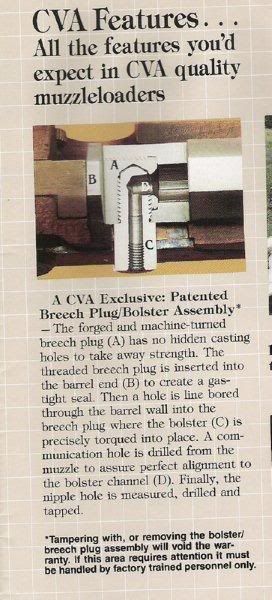Old40Rod: IMO, if we are using the historic definition, Nock's Patent Breech is "the" Patent Breech.
As can be seen, Nock's true Patent Breech has a chamber which runs across the width of the barrel and is vented to the flash pan and the bore.
This chamber is quite large and is not to be confused with the flash channel that connects the vent or primer with the bore as is shown in the Chambered Breech.
The only modern production gun that I'm aware of that uses this is the Hoppe's Target Pistol (no longer in production). Of course it isn't that hard to make and I'm sure there are some modern custom made guns which have been machined using this design.
Mr Greeners Chambered breech is not a "Patent Breech". It was a different way to meet the same end, and it is the breech that is found in the Lyman, TC and some CVA's.
Now, as far as common usage goes, almost everyone who wants to talk about their Chambered Breech uses the term "my patent breech" or "TC's patent breech"... and in most cases they are not asking questions about its history or its design or the reason for its design. They are usually referring to some other question about their gun so most of us (myself included) ignore the mis-use of the term and deal with the question at hand rather than coming across as a wise guy and diverting the post towards issues beyond the one in the post.
Although this is great as far as being friendly and answering the question it does cause many people to come away with the impression that the gun does in deed have a true "Patent Breech".
When someone asks a question specifically about the Patent Breech, I feel it is only proper to use the historic definition which is Nock's design.
In the interest of making this a friendly forum I for one will continue to ignore the mis-use of the term unless it is the subject of the post.
























